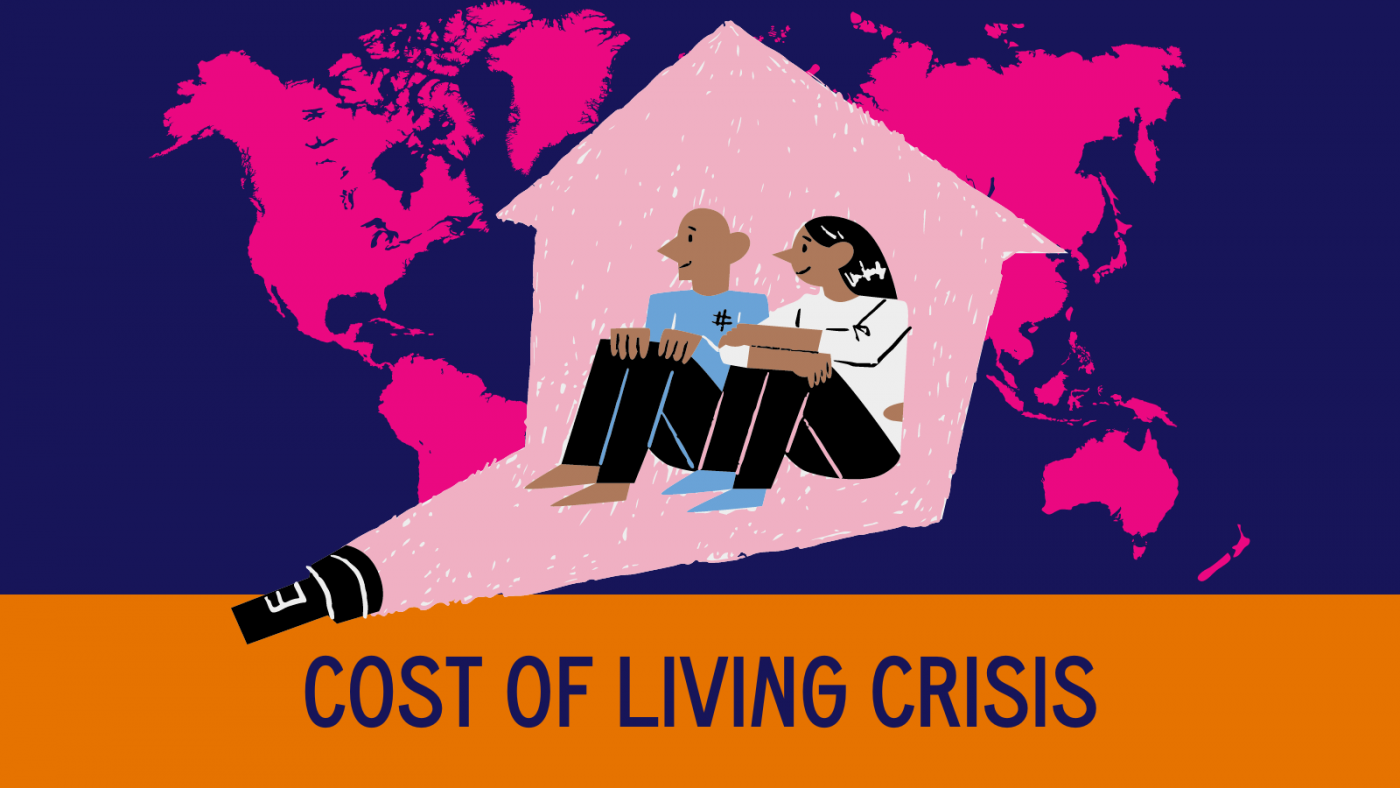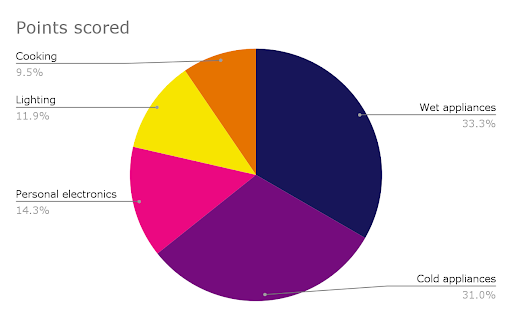Cost of Living Crisis: Energy and Fuel Costs

The cost of living crisis continues to impact millions of families across the UK. One aspect of the crisis has been the rising costs in energy and fuel. We break down what the rise in energy and fuel prices means and what resources are available to you.
National Energy Action have estimated that 6.7 million households are in fuel poverty across the UK. This was at the start of April 2022. However, in the past 6 months we have witnessed an increase of this by 50 percent.
According to a report by The Joseph Rowntree Foundation released in June 2022, 2.3 million people were already having to face the difficult decision of choosing between heating or eating. Many people, according to the report, were already going without both. .
In this blog, we break down what the rise in energy and fuel prices mean for you, how you can communicate with your energy provider, and what resources are available to support you and your community.
What is fuel poverty?
Fuel poverty is defined as not being able to afford to heat your home to the level needed to keep healthy.
What do we mean by energy crisis?
In this article, energy refers to what you use to heat your home, keep the lights on, or use to cook food with.
It has been estimated that more than 1 in 3 households in the UK could be in fuel poverty from October 2022, and this is set to increase as energy bills continue to rise.
We are facing an energy crisis, and people are having to choose between heating their homes or other essential costs, like eating.
What is the poverty premium?
The poverty premium is the extra cost people on low incomes and in poverty pay for essential products and services.
People in poverty pay more for a range of essential products and services such as energy, credit, and insurance.
This is called the poverty premium: the extra costs of being poor.
What does this mean for communities experiencing marginalisation?
Although the rise in energy costs is affecting all households in the United Kingdom, people experiencing marginalisation or poverty are at the highest risk of being plummeted into fuel poverty.
If you are experiencing fuel poverty this may be a result of the poverty premium, which may look like:
- Higher costs for heating due to poor home insulation: Racialised people, young people and disabled people are more likely to be affected by fuel poverty than others. This is linked to systemic inequality; while these communities often have lower incomes, there is a higher energy consumption in households.This is often due to poor home insulation.
- Higher costs of gas and electricity on prepayment meters: Those on prepayment are also hardest hit by the rise in energy costs, as they’re not able to spread their energy bills throughout the year.
- Unable to switch providers: Those who have existing debt with an energy provider or outstanding bills, will struggle to switch to a better provider who could bring cost savings.
How else might someone experiencing marginalisation be at a higher risk of fuel poverty?
Friends of the Earth have identified 8,927 neighbourhoods that will suffer most from the energy crisis. They are calling these places energy crisis hotspots.
Racialised people are more likely to live in energy crisis hotspots than white people. According to Friends of the Earth, 11% of white people live in these hotspots compared with 21% of racialised people.
Young people are also more likely to live in energy crisis hotspots than other areas. There are 3.5 million young people, aged under 18, who are currently living in these neighbourhoods.
A higher proportion of disabled people and/or with health challenges tend to be impacted at a higher rate by fuel poverty, partly due to increased energy needs.
In 2018, Scope released a report which stated that more than 900,000 households with a disabled person in England were living in fuel poverty.
You can find out whether you are based in an energy crisis hotspot on Friends of the Earth, who have created an interactive map.
How to communicate with your energy provider:
If you’re struggling with the rise in energy costs the first thing you should do is contact your energy provider.
Your energy supplier is required to work with you to set up an affordable repayment plan and the sooner you contact them to let them know you’re struggling, the quicker you can get help.
Before you speak to them, think about:
- How much you can afford to pay in monthly instalments.
- How long you need to pay your bills if they are in arrears e.g. 6 months, 12 months etc.
- Any changes to your financial situation e.g. loss of income
- Any other unplanned expenses that have come up.
Knowing the answers to these things and having clarity when communicating with your provider is really important. It can be a stressful thing to do, but remember you have various tools at your disposal and you are not alone.
If you don’t try and negotiate with your supplier or ignore the issue at hand - they may threaten to disconnect your energy. You can find out what to do if you have been told that your energy supply will be disconnected on Citizen’s Advice Bureau.
These are some of the things you can suggest to your energy supplier when talking to them:
- Agree and set up a payment plan with your energy supplier: Your energy supplier has to help you come to a solution and you should be able to negotiate a deal that works for you both. Aim to set up a monthly payment plan that is feasible for you.
- Pay off your debt through your benefits. This can be done through the Fuel Direct Scheme.
To be eligible for the Fuel Direct Scheme, you must be getting one of the following benefits:
- Income Based Jobseeker’s Allowance
- Income Support
- Income-related Employment and Support Allowance
- Pension Credit
- Universal Credit (if you’re getting Universal Credit and you’re working, you’re only eligible for the Fuel Direct Scheme if your earnings are less than your ‘work allowance’)
- Pay your gas and electricity through your benefits:
- If you’re already paying off energy debts through your benefits, you can also ask to start paying your energy bills directly from your benefits.
- Please note that until April 2023 your energy supplier cannot force you to pay your energy bills through your benefits
You can also access hardship funds to help with repaying your debt. You can either talk to your local advice agency or contact Citizens Advice Consumer Helpline on 0808 223 1133. Textphone users call 18001 0808 223 1133 (call charges may apply), or visit your local Citizens Advice.
Citizens Advice Bureau offer a host of resources in regards to tackling rising energy costs, you can find out more about this here.
National Energy Action have also put together advice on how to keep your home warm this winter. You can access their resources here.
Explore more resources on the Spark & Co. Cost of Living Resource Hub.
How to reduce energy costs in the home
We need to recognise that good budgeting and turning off appliances alone will not solve the energy crisis; the cost of living crisis is the result of multiple external factors and changing Government policies. It requires serious and consistent support from Government and Local Authorities. ,
However, there are some actions you can do to reduce costs in the home to maximise your resources..
Below are some examples of what you can do to reduce energy costs in the home:
- Lights and switches
- Turn off lights when not in use
- Switch to LED lights if this is an option for you
- Switch off stand-by (turn your plug sockets off)
- Draught proof windows and doors (if this is an option for you)
- Water usage
- Be mindful about washing
- Fill up the washing machine
- Turn down the temperature
- Avoid the tumble dryer (perhaps dry your clothes when the heating is on or keep windows open when drying clothes to avoid damp)
- Fill your dishwasher and change to eco setting if this is available
- Swap your bath for a shower, and spend less time in the shower where possible.
- Be mindful about washing
- Appliances: Be mindful with using kitchen appliances - for example, don’t overfill your kettle as this uses up more energy.
- Insulation: Top up the insulation and draught proof windows and doors (if this is an affordable option for you!)
How much energy your appliances use

Find more information about how much energy your appliances use.
Financial support available to you
The Local Government Association has put together a host of resources which are specific to the local area you’re based in. Some of these resources break down the initiatives available to you in your local area. For example Brighton and Hove have launched a Cost of Living Crisis Appeal Fund.
The Government has also launched the Energy Bills Support Scheme which provides a £400 non-repayable discount to eligible households to help with their energy bills over winter 2022 to 2023.
As well as this, make sure you’ve signed up to benefits you are eligible for. These may include:
- Housing Benefit
- Income-related Employment
- Support Allowance (ESA)
- Income-based Jobseeker’s Allowance (JSA)
- Child Tax Credits (CTC)
- Working Tax Credits (WTC)
- Income Support
You can check whether you’re eligible for any of the above benefits online - and it only takes around 10 minutes.
If you would like extra support with checking your entitlement or making a claim, you can contact your local Citizen’s Advice Bureau.
You can also contact National Energy Action for a full benefit entitlement check via their Warm and Safe Homes Advice Service – call 0800 304 7159.
Explore more resources on the Spark & Co. cost of living resource hub.
Struggling to find more cost of living support?
Our Cost of Living Resource Hub has over 50 organisations, groups and supportive services to help you.
You may also find the following resources from our cost of living series helpful:
This piece was written by Spark & Co.'s Brand and Engagement Lead, Zoe Daniels (They/Them). Find out more about them here.